
Kitchen Cabinet Makeover: Thermofoil vs Laminate Explained
Confused between thermofoil and laminate but need kitchen cabinets renovation? Our guide will help you decide by durability, cost, and maintenance tips.











Calling all DIY enthusiasts! Are your kitchen cabinets looking a little tired and dated? Do you dream of a kitchen makeover but cringe at the thought of hefty contractor fees and weeks of disruption? Well, DIY kitchen cabinet refacing might be the perfect solution!
While the idea of transforming your kitchen yourself is certainly appealing, let's take a moment to explore the reality of this project before you dive headfirst into a sawdust whirlwind. Whether you ultimately choose the DIY route or opt for professional cabinet refacing services, understanding the process is key to achieving your dream kitchen.
Before you start your DIY cabinet refacing project, you'll need to assemble your arsenal of tools and materials. Here's a basic list to get you started:
You'll need to budget around $150-300 for tools if you don't already own them. Fortunately, most homeowners likely have basic items like screwdrivers, measuring tape, and a drill on hand, which can significantly reduce your initial investment.
DIY cabinet refacing kits are available on platforms like Amazon for those looking to simplify the process. These kits typically cost between $100 and $250 and include essential materials like veneer sheets, edge banding tape, application tools, and sandpaper.
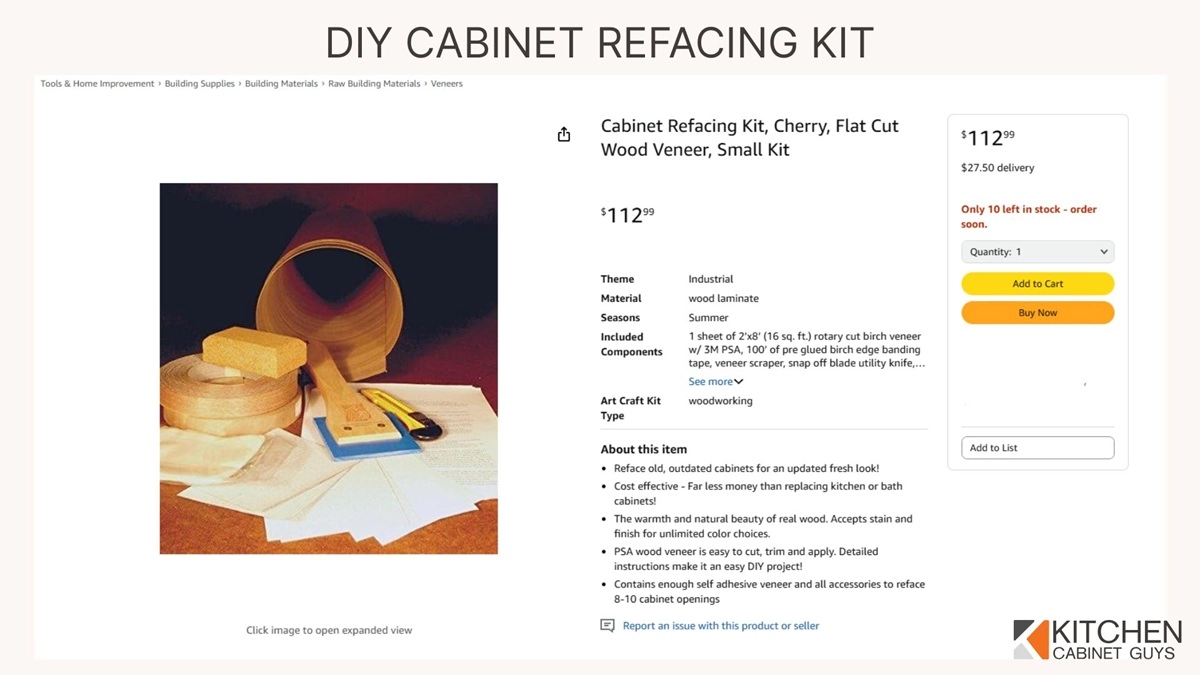
Most kits provide wood veneer, as it's one of the easiest materials for DIYers to apply to existing cabinets. However, wood veneer is known for its inflexibility compared to materials like thermofoil (also known as 3D laminate), which can conform to complex cabinet door designs. Thermofoil can be applied to virtually any drawer front style, so it’s preferred for curved or detailed surfaces.
Now comes the fun part — selecting your refacing materials! This is where you get to tap into your creative side and choose the style that will transform your kitchen.
Choosing the right materials can give your kitchen the appearance of having new cabinets without the need for a full replacement, offering a cost-effective way to achieve a major transformation.
We're focusing on the easiest DIY cabinet refacing project: wood or laminate veneer. While these materials offer limited design options compared to thermofoil, they're much more DIY-friendly. Thermofoil requires specialized equipment and techniques that most beginners find challenging to master.
Now that you've gathered your tools and materials, it's time to dive into the refacing process. Here's a general overview of the steps involved:
The first order of business is removing your existing cabinet doors and drawer fronts. Carefully remove them, taking note of their location and any hardware attached. Labeling each cabinet door and drawer can be a lifesaver later when it’s time to reattach them to their rightful places. Be gentle with those old doors — you might need them for reference when ordering your new cabinet doors.
Now that your cabinet boxes are exposed, it’s time to give them some TLC. Thoroughly clean them inside and out, removing any grease, grime, or remnants of the past. Before proceeding, inspect the cabinet frame for any damage or imperfections that need to be addressed to ensure a solid foundation for the refacing process. Next, inspect the surfaces for any imperfections. Sand down any rough patches or protruding bumps to create a smooth and even canvas for your refacing materials.

Precision is paramount in the world of DIY kitchen cabinet refacing. Grab your measuring tape and measure the face frame stiles and rails of your cabinets — those vertical and horizontal pieces that form the framework of your cabinet doors.
Then, with the utmost care, cut your veneer strips to the exact width. Double-check, triple-check, and even quadruple-check your measurements before making any cuts.
Remember, accuracy is key to achieving a professional-looking finish.
With your veneer strips cut to perfection, it's time to bring out the construction adhesive and the veneer applicator tool. Carefully align each strip with the corresponding face frame rail to ensure a perfect match.
Then, using the applicator tool, gently press the veneer onto the surface, working your way from one end to the other to eliminate any air bubbles or wrinkles. Think of it as applying a giant sticker.
Exposed cabinet sides? No problem! End panels can help. Measure the exposed sides of your cabinets and cut the end panels to fit snugly. Apply construction adhesive to the back of each panel and carefully attach them to make sure they are flush with the cabinet frames and create a seamless, polished look.
This is the moment you’ve been waiting for — the grand reveal of your new cabinet doors and drawer fronts! If you opted for unfinished doors, now is the time to be creative and paint or stain them to match your desired aesthetic. Two coats of paint or stain will ensure a rich, even finish that complements your kitchen’s style.
Once your doors and drawer fronts are ready for their debut, it’s time to install them using the existing hinge plates or new cup hinges. Before attaching the drawer fronts, measure the distance from the drawer box to the face frame drawer rail to ensure they are properly aligned. Make sure your doors and drawer fronts are carefully aligned before securing them with screws.
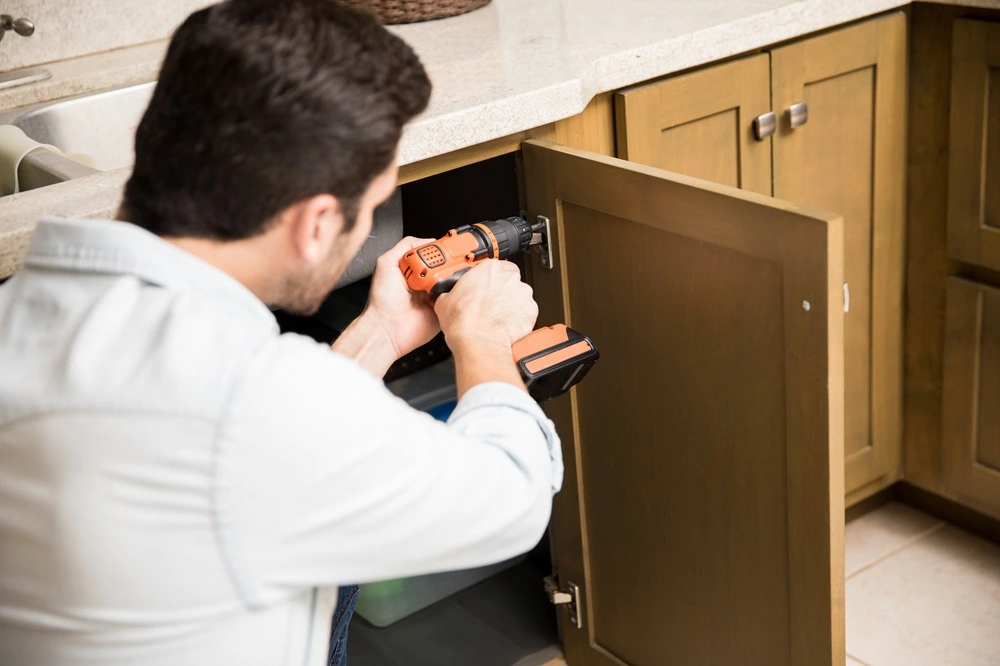
The final touch to your masterpiece? Replacing your old drawer pulls and knobs with new hardware that complements your new cabinet style. Whether you choose sleek and modern or classic and ornate, new hardware can elevate the look of your refaced cabinets and add a touch of personality to your kitchen. When installing your new hardware, be sure to use a drill to create pilot holes before securing the pulls and knobs with screws. This will prevent the wood from splitting and ensure a secure and lasting attachment.
Today's thermofoil is not your parents' 1980s laminate that was prone to chipping and peeling. Modern thermofoil is among the most durable cabinet finishing options, offering exceptional moisture resistance, heat tolerance, and flexibility to conform to virtually any cabinet profile. It has a seamless appearance and a variety of finishes that make it an attractive option for those seeking a high-end look.
If you're ambitious enough to attempt thermofoil refacing, you'll need these specialized tools and materials:
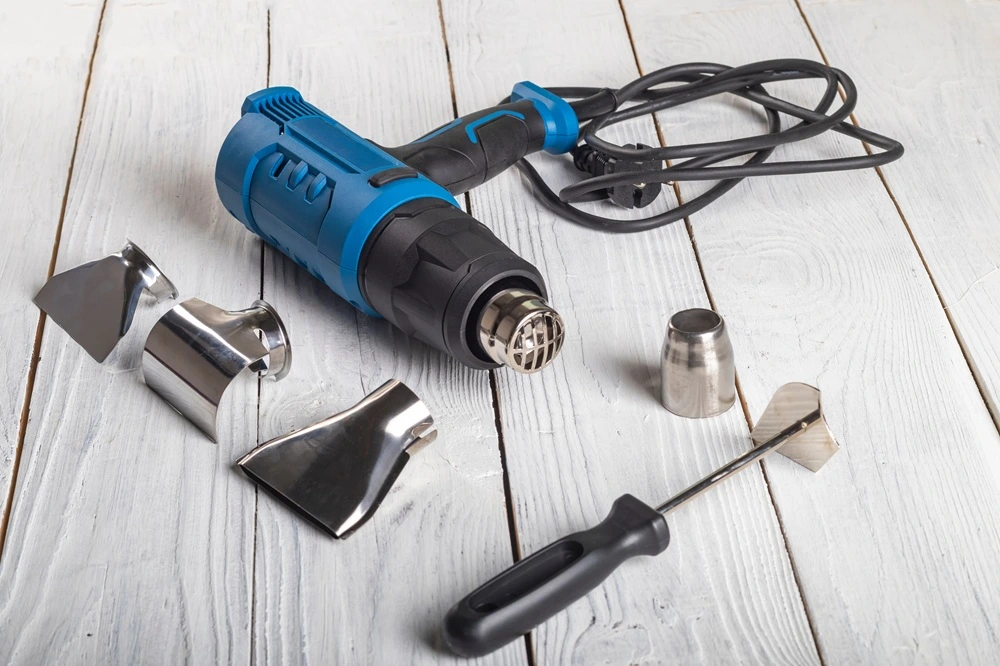
Yes, you can DIY cabinet refacing with thermofoil, but you’ll need patience and precision. Here are the essential steps:
As professionals, we give this DIY project a difficulty rating of 8/10. Even experienced DIYers find thermofoil application challenging without specialized equipment like a vacuum press.
Refacing kitchen cabinets sounds straightforward, right? But be sure to acknowledge the potential challenges and common cabinet refacing problems you might encounter.
Precision is crucial in cabinet refacing. Even a small miscalculation can lead to gaps, overlaps, or uneven surfaces. Be prepared to double-check all your measurements and take your time with cutting to avoid costly mistakes.
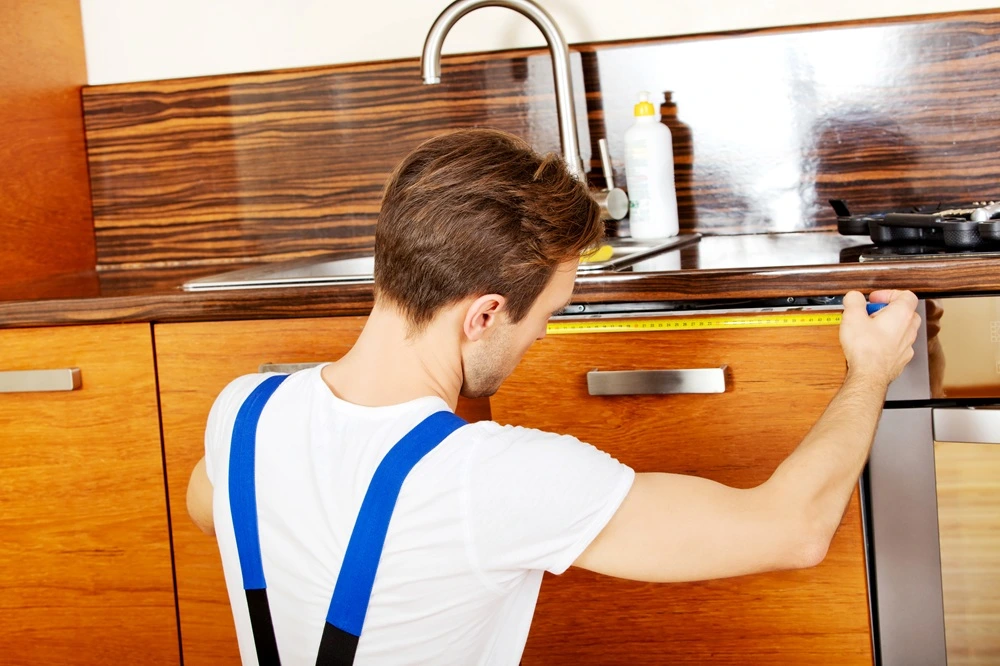
Applying veneer strips smoothly and evenly requires patience and a steady hand. Air bubbles, wrinkles, or misalignments can ruin the look of your refaced cabinets.
Your existing cabinets may have imperfections, such as dings, dents, or uneven surfaces, that need to be addressed before applying veneer strips or end panels. This may require additional sanding, filling, or repairs.
If you're only refacing your cabinet doors and drawer fronts, you'll need to ensure they match the existing finish of your cabinet boxes. This can be tricky, especially if your cabinets are older or have a custom finish. A matching stain pen can be helpful for touching up any unstained edges.
DIY kitchen cabinet refacing is not a weekend project. Depending on the size of your kitchen and your skill level, it can take several days or even weeks to complete. Be prepared to invest a significant amount of time and effort.
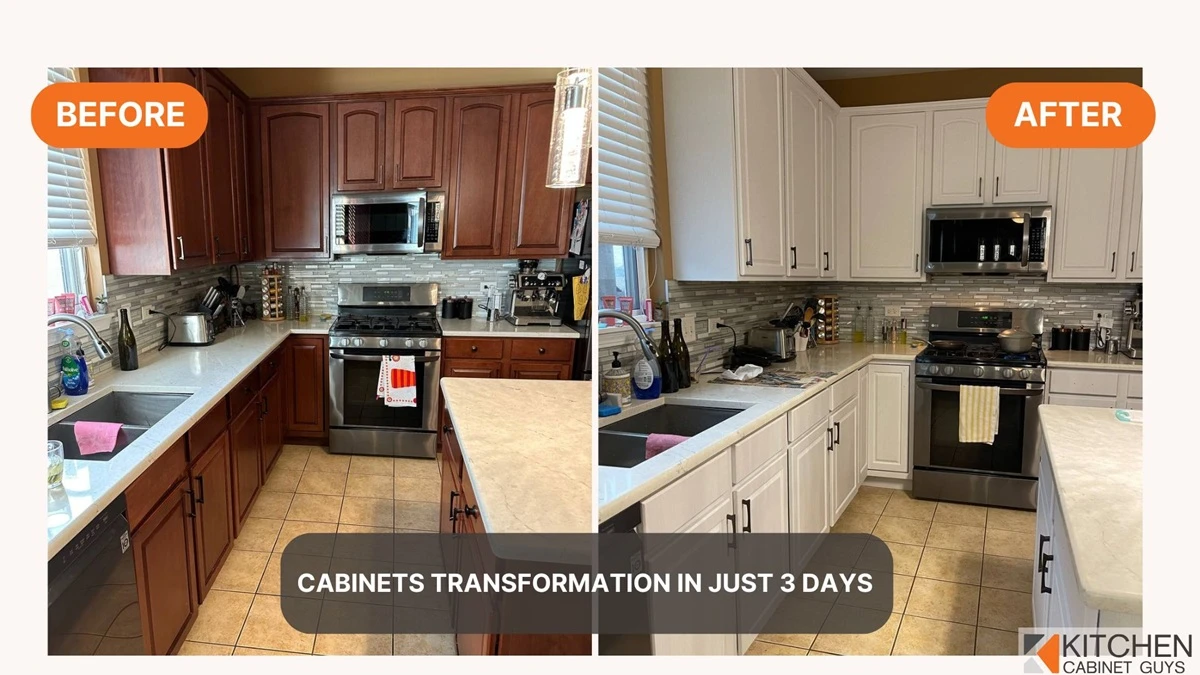
While DIY cabinet refacing can save you money, it's important to balance potential challenges against the value of your time and desired results. If you aren’t confident in your DIY skills or are short on time, professional refacing services may be preferred.
Here are some factors to consider when deciding between DIY and professional cabinet refacing:
Keep in mind that achieving the best finish with these materials often requires using a vacuum press, as opposed to simply using glue and a hairdryer!
Ultimately, the decision of whether to tackle DIY kitchen cabinet refacing is a personal one. If you're up for the challenge, have the necessary skills and tools, and are willing to invest the time and effort, then go for it, but be prepared for potential issues like material chipping, especially with wood veneer, which may not withstand daily kitchen use as well as professional-grade materials.
As cabinet refacing experts, Kitchen Cabinet Guys are always ready to provide top-notch refacing services for all door styles, cabinet boxes, sizes, and designs. Our family-owned and local Chicago company offers high-quality thermofoil material that can transform your kitchen in a few days without disruption. You’ll see our emphasis on quality, craftsmanship, and customer support in all that we do. Contact our team today to schedule your free consultation and let us help you create the kitchen of your dreams.

No time for DIY projects? Our Chicago Area cabinet refacing team handles everything while you enjoy your life. Experience the difference professional thermofoil refacing makes — done right the first time.
Call Us Now: (800) 809-7197 or
Get a Free Estimate